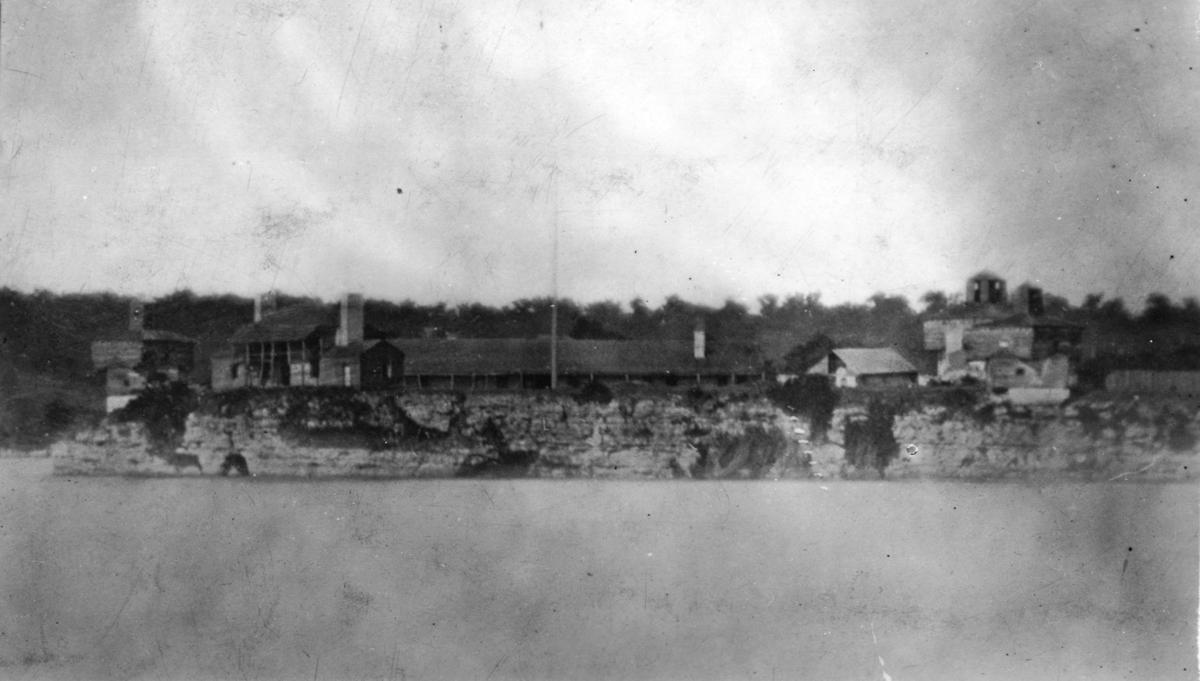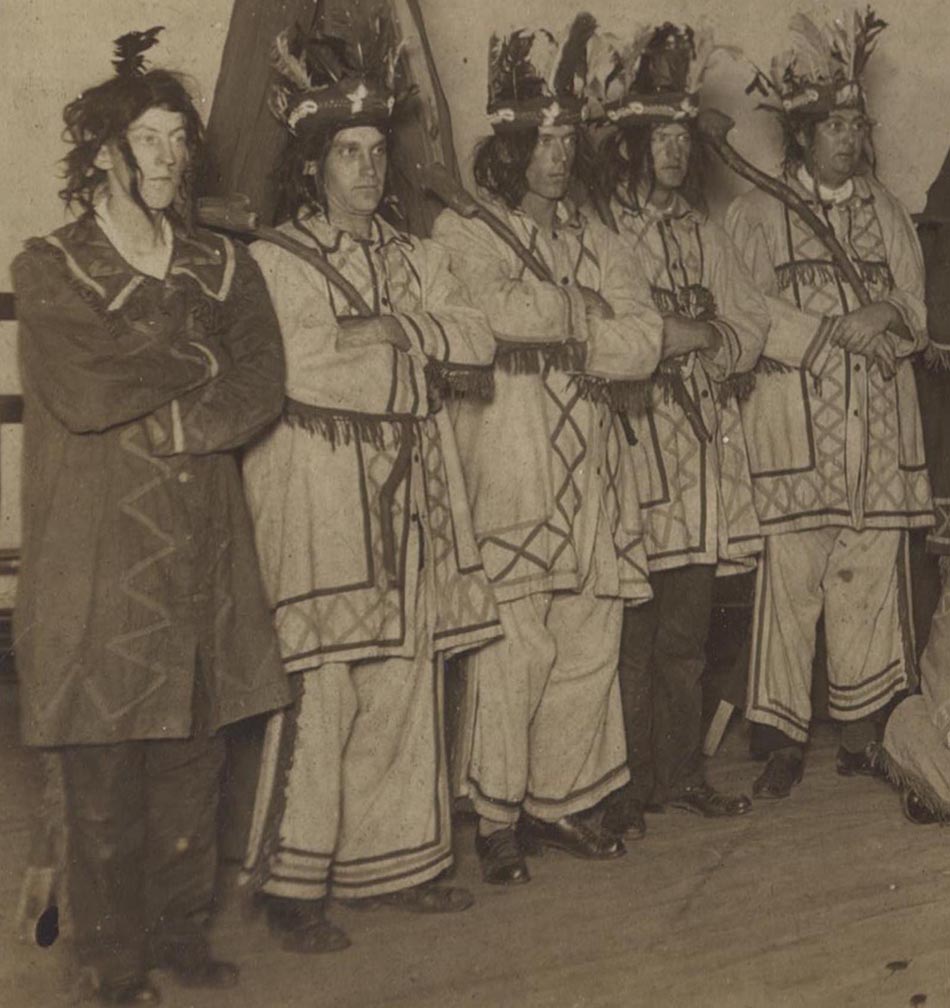Fort Armstrong Rock Island - Fort Armstrong was built in 1816 and is part of the Fort Mississippi River system. Fort Armstrong's role was fulfilled after serving as a military command during the Black Hawks. It was abandoned in 1836 but remained an ammunition depot until 1845. In 1916 a replica of a Fort Armstrong block house was built on the site where the fort used to stand.
Construction of Fort Armstrong began in May 1816. The fort is named after John Armstrong, Secretary of War under President James Monroe. The land previously occupied by Fort Armstrong was a vacation spot for the Sac and Fox Indians. The capital of the Saukenuk tribe is about 5 miles south of Rock Island (now Arsenal).
Fort Armstrong Rock Island

Fort Armstrong's location at the western end of Arsenal was chosen based on recommendations and investigations by Zebulon Pike and Robert E. Lee. Rock Island offers a natural exploration break that makes it easier to protect the location of the fort as well as the northern point. The vast amount of resources available on and around Rock Island also provide a variety of locations for construction. With the Rock River further south, Fort Armstrong's location allowed US forces to take control of the Mississippi River.
The 15 Best Things To Do In Rock Island
Fort Armstrong's primary function was to provide security for U.S. troops, settlers, and merchants crossing the Mississippi River. However, relations with the Sac and Fox Indians deteriorated. In 1832, the Black Hawk, the warlord of the Sac tribe, crossed the Mississippi River to retake Saukenuk. The Americans took this as a hostile act by starting the Black Hawks war.
With the resolution of the Black Hawks, Fort Armstrong was no longer needed and was therefore abandoned. Ruins were used by patrols until a fire destroyed the remains of the fort in 1854. The replica block house was built in 1916 to celebrate Fort Armstrong's centenary. In the summer of 1814, clashes between the United States and British-backed warriors under the Black Hawk erupted and Rock Island collapsed.
Since 1803, the United States has occupied both banks of the state of Mississippi. Lieutenant Zebulon Pike arrived on the Rock Island in 1805 and immediately recognized its strategic and tactical significance. The Rock Island Rapids traveled 12 miles upstream. From Rock Island, troops were able to control the entire Mississippi Valley from above, controlling speed.
Local Indians Sauk and Meskwaki, led by the Black Hawk, opposed the disputed 1804 treaty, which transferred more than 50 million acres to the United States. Army posts on the island can also keep traces of the Black Hawk and his followers.
Rock Island, Il
The battle of 1814 confirmed to the army that it needed to be present on the Rock Island. In May 1816, Fort Armstrong was built at the tip of the island. A small army stationed there was responsible for controlling the Mississippi Valley from above, defending Rock Island. Keep an eye on anti-US suspects bribing Indians in the region. Maintain peaceful relations between Native American tribes; And then provide security when settlers move into the area.
Bribery struggles came to an end in the 1832 Black Hawks. Fort Armstrong served as an administrative and logistics center during the war. The post-war Black Hawks treaty pushed Native Americans west of Mississippi, and as a result Fort Armstrong's security role was shifted to a shipping mission as a supply depot. This role ended in 1845 after supplies were sent for the Mexican-American War.
Major meetings were held at the home of George Davenport in 1845. There was not a single bridge across the Mississippi River, and Rock Island was the only place where engineers at the time could build a commercial railway bridge.

The bridge can jump from the mainland of Illinois to the island, then across the shallows to Iowa. After 11 years of conflict and resistance from the federal government, the first railway bridge over the Mississippi River was opened in April 1856, spurring industrial growth and local settlement. Rock Island, which uses waterways and railways, has become the shipping hub of the United States. Eventually, a transcontinental railway passed through the island.
Historic Rock Island Arsenal Homes To Open For Rare Tours [pics]
In the late 1850s, the army was looking for warehouses to supply troops along the border.
The distribution network of bridges and railways, combined with steam boat traffic and federal ownership of Rock Island, influenced the decision to form Rock Island Arsenal.
President Abraham Lincoln signed the Law on the Establishment of Arms on July 11, 1862. In 1863 construction began on a warehouse, now called the Clock Tower.
The building was not completed until 1867, when the mission proceeded to production. With the end of the Civil War, the plan was drawn up by Brevet Brig. General Thomas Rodman for a larger complex. Construction began in 1866.
Fort Armstrong, Rock Island Arsenal Have Defended Nation Since 1816
The construction was an economic stimulus as Rock Island Arsenal became the largest federal public works project of the 19th century. The arsenal produced artillery and artillery, locks, kitchen utensils, Bayon canvas products, and after 1903 rifles. He repaired and kept everything the soldiers needed.
Arsenal's first major support for the American War was in 1898 during the Spanish-American War. Rock Island Arsenal is known for its speed and quality. As a result, it became the center of artillery development for the army.
During World War I, the work of the arsenal increased from 2,000 to 15,000. After World War I, the arsenal also became the center of army tank development.

During World War II, the arsenal saw its greatest work, with nearly 19,000 people on the island. Large spare parts operations used the east and west railways to the coast. In addition, machine guns, artillery, tanks, aircraft engines and other goods were produced and sent to the front lines.
Rock Island Il Illinois, Fort Armstrong, Grounds, Cannons Vintagec1942 Postcard
Arms were also important in assisting the Korean and Vietnamese wars. As the size of the army and production requirements decreased, other high commanders were stationed on the island. Army Auxiliary Command, 1st Army Joint Command and Arsenal live operations on the island.
Today, the arsenal continues to support the army peacefully. In 1990-1991, major components were manufactured and shipped to support Desert Storm operations. In 2003, when opposition forces began intercepting US vehicles with street bombs, the arsenal produced the first professional armor for Humvees in just a few weeks. Rock Island Arsenal has one of two warehouses and with modern technology can produce one or 1 million of any object required by the armed forces.
Despite being known and respected in the Armed Forces for its products, in the nearby community, Rock Island Arsenal remains an important economic engine and employer. Also on the island today are the National Cemetery and the Federal Cemetery, containing the remains of federal prisoners held on the island between 1863 and 1865.
A monument to the first bridge is on the island, along with the home of George Davenport, the host of the planned meeting of the bridge. In addition to this small house, the island is also home to Quarters One, the largest house in the military ranks and the second largest White House space in the federal inventory.
Illinois: Rock Island, 1853. /nview Of Fort Armstrong On The Mississippi River At Rock Island, Illinois. Wood Engraving, American, 1853. Poster Print By Granger Collection
The Rock Island Arsenal Museum, the second oldest museum in the military system, tells the history of the arsenal and displays more than 1,200 weapons. The Lock and Dam Visitor Center tells the story of the locking of the Mississippi River and the first completed naval dam, which, when completed in 1933, removed the Rock Island Rapids, noted by Zebulon Pike 125 years ago. .
Author's Note: The Illinois Bicentennial Weekly Series is brought to you by the Illinois Associated Press Media Editors and the Illinois Press Association. More than 20 newspapers publish stories about the history, important places and times of the state leading up to the two-year anniversary celebration on December 3, 2018. The story, published to date, can be found on 200illinois.com.1839 A Fort Armstrong painting six years after the withdrawal of the Sauk and Fox tribes on Arsal Island from U.S. forces. In the background from the Illinois side of the Mississippi River, presumed to be Octave Blair.
Fort Armstrong (1816–1836) was part of the Western Frontier chain that the United States built after the 1812 War. It is located at the foot of Rock Island in the Mississippi River near cities today. Illinois and Iowa. It is five miles from the main villages of Sac and Fox on the Rock River, Illinois. Of 300-square-foot stone and wood structures, the fort began in May 1816 and was completed the following year. In 1832, U.S. troops used the fort as their military headquarters during the Black Hawks. It is usually militarized by two companies of the regular U.S. Army. With the calm of the Indian threat in Illinois, the U.S. government ceased operations at Fort Armstrong, and the U.S. Army abandoned the border fort in 1836.

In 1805
Davenport Ia 1844
Armstrong heating and cooling fort atkinson, armstrong hotel fort collins, armstrong flowers fort wayne in, armstrong bank fort smith ar, the armstrong hotel fort collins co, armstrong flowers fort wayne, the armstrong fort collins, armstrong florist fort wayne, armstrong fort collins, armstrong bank fort smith, armstrong hotel fort collins colorado, armstrong hotel fort collins haunted
0 Comments